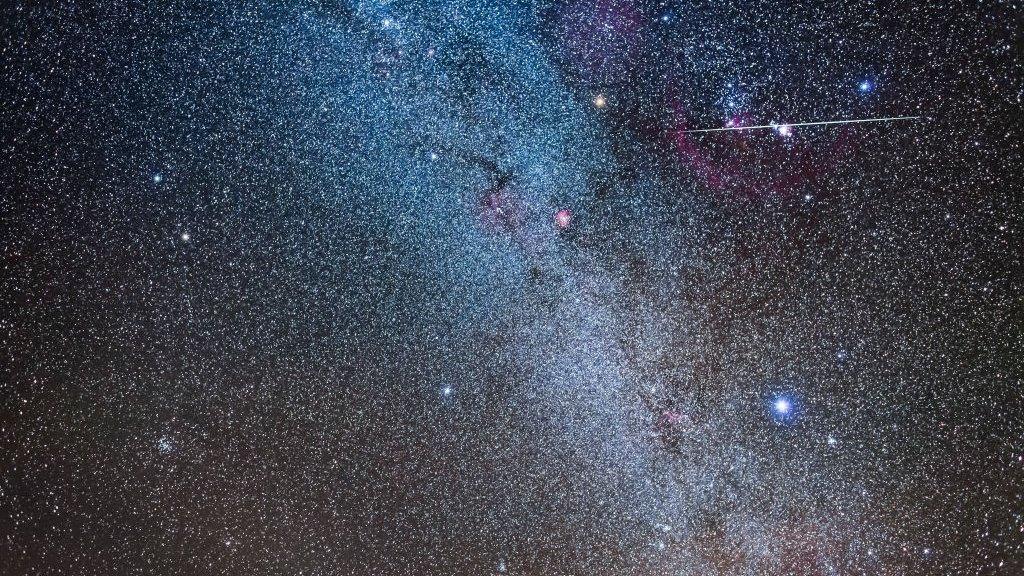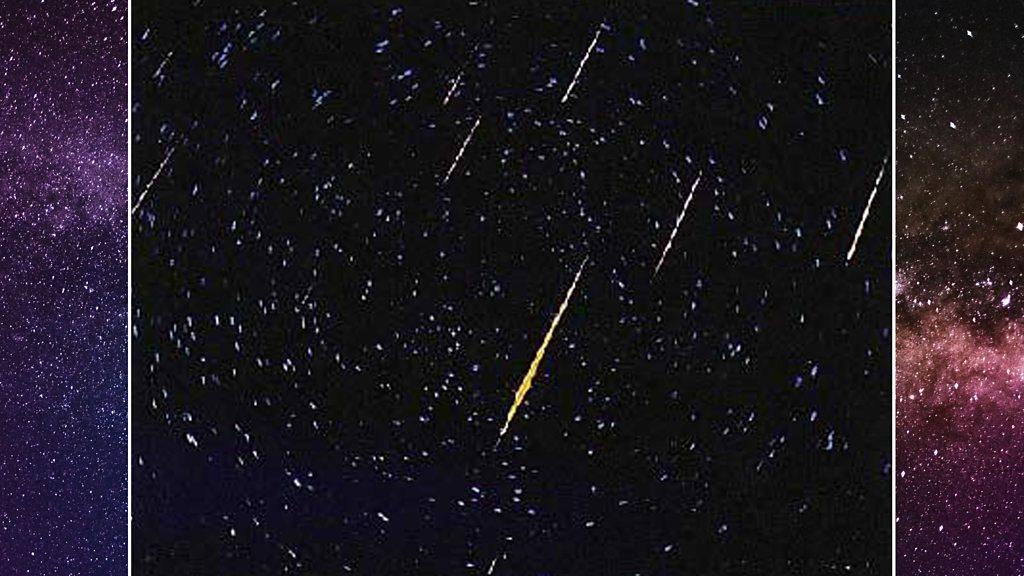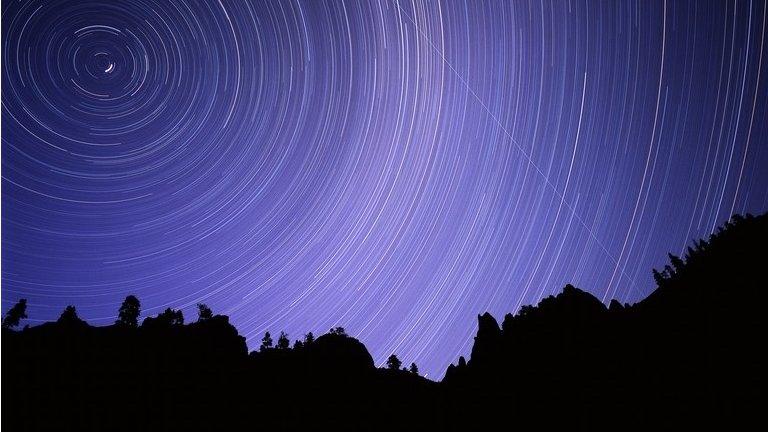Geminids: When and how to watch the sky's brightest meteor shower
- Published

A single Geminid meteor shoots through the Sword of Orion in 2017 over Arizona
Sky enthusiasts are gearing up for the peak of the annual Geminids meteor shower, one of the brightest and best displays in the night sky.
The dazzling show will be visible around the world from late Tuesday night and into the early hours of Wednesday morning local time.
In perfect conditions, viewers could spot 100 to 150 meteors per hour.
But light from this year's bright waning gibbous moon may interfere with visibility.
Still, experts say it will be worth looking up to catch some of the show, as around 30 to 40 meteors per hour will still be visible even with the bright moon in the way.
The Geminids meteor shower can be seen every year around 13 and 14 December. It has been called the "most dependable" display of its kind by American Meteor Society.
The Geminids meteor shower of 2020 was best visible from Lijiang city in southwest China
Most meteor showers are caused by comets, but the Geminids meteor shower is unique.
Instead, it is caused by debris left behind by a rocky asteroid known as 3200 Phaethon.
The earth passes through the trail of debris annually as it orbits around the sun. When the debris hit our planet's atmosphere - sometimes at speeds of up to 70 kilometres per second - they burn up and produce streaks of light, which are then visible from earth.
The meteors are known as Geminids because they appear to emerge from the Gemini constellation.
The meteor shower is expected to start around 21:00 local time on Tuesday, and will peak at 06:00 local time the following morning. It will likely hit its peak around 02:00, according to Nasa.
It is best seen from a location that is as dark as possible and away from streetlights. No telescopes or binoculars are needed, as Geminids can be seen with the naked eye.
Experts suggest sitting in the shade of a house or a tree to get a good view of the night sky without interference from light, including from the bright gibbous - meaning less than full - moon.
They also advise not to look at a cell phone screen or other bright objects, as it takes about 30 minutes for the eyes to fully adjust to the night sky.
The show is expected to last most of the night, so there will be good opportunities to catch the bright flashes of brilliant light across the sky.
Related topics
- Published13 December 2018

- Published11 August 2015
